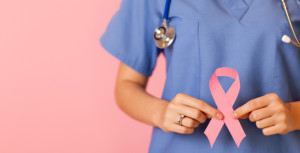
This week on I’ve enlisted the expertise of Breast Cancer Irelands Breast Care Nurse Specialist Trudi Roche – Trudi has written this piece which will talk you through how to check yourself, what to look out for and what to do if you find something that concerns you.
Thank you Trudi for this very informative piece.
With one in every nine Irish women getting breast cancer at some stage in their lives, it touches almost every family in some way. The earlier breast cancer is detected, the more treatable and curable it is. By checking your own breasts every month, you learn what is normal for you, so that should an abnormality arise, you can detect it early and therefore treat it early. Self-breast examination is a very effective screening tool for breast cancer and as we have complete control of this ourselves, unlike many other health problems that life can throw at you, we can make the difference ourselves! It is important to remember the having had breast cancer does increase your risk slightly of developing it again, so keep checking.
It is recommended that we perform a self-breast examination (SBE) once a month, either a few days after your period has ended, or if you are post-menopausal or not getting periods, the same day each month (it doesn’t matter when during the month you do it). There are two parts to SBE
- Visual inspection: This is done by removing all clothes from the waist up, and standing straight in front of the mirror. With your hands firstly by your side, then above your head and finally hand on your hips pushing in, so your chest muscles are tensed, look for the following signs
- Puckering of the skin
- A visible lump
- Any breaks or sores on your skin that are not healing
- Change in the skin around the nipple or the breast
- Redness in the breast
- Retracted (inverted) nipple (that is new, and not there since puberty) particularly if it is just on one side
- Increase in the size of the breast
- One breast unusually lower than the other
- Enlarged glands
- Swelling in the armpit
- Palpation
- Perform your examination using the padded part of your three middle fingers
- Place your arm of the side you are going to examine over your head for easier access
- Begin, using the opposite hand under your arm and work in a circular motion (like a spiral) around the breast, going right up to your collar bone and down to the bottom/underneath of your breast.
- Keep going in circles, making the circles smaller each time you go around until you reach the nipple.
- Ensure you are pressing firmly enough to feel the breast tissue itself and not just the skin without causing too much pain or discomfort.
- Do this both lying and standing to ensure that all areas of the breast are examined.
If you do find an abnormality, don’t be alarmed, the majority of lumps are benign, but you do need to go to your GP to get checked. If you have has previous surgery, even a mastectomy, you should still examine yourself, especially around your scar. Any changes or lumps on your scar should be reported to your doctor.
Breast cancer can affect women of all ages, so you are never too young to start checking yourself. If you have implants, follow the same instructions, most implants are under breast tissue so you will still be able to feel an abnormality.
See the below video on self-breast examination and link to Breast Awareness app:
http://www.breastcancerireland.com/education-awareness/self-breast-check-video/
http://www.breastcancerireland.com/education-awareness/our-free-app/
If you would like me to visit your workplace or women’s group to give a demonstration, please contact me at troche@bciresearch.ie or 0868194827
REMEMBER: EARLY DETECTION CAN SAVE YOUR LIFE
#breastcancer #breastcancerawareness

